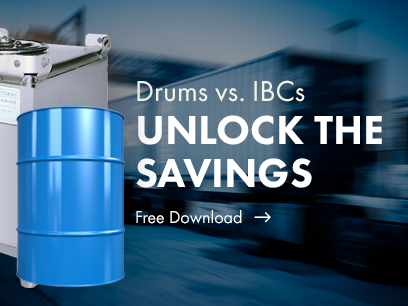Keeping stainless steel Intermediate Bulk Containers (IBCs) in compliance with the U.S. Department of Transportation (DOT) regulations is crucial for the safe and legal transportation of hazardous materials. To maintain DOT compliance for stainless steel IBCs, you should follow these essential steps:
- Select Approved IBCs: Ensure that the stainless steel IBCs you use are DOT-approved or have met the regulatory requirements outlined in the DOT's Hazardous Materials Regulations (HMR). Only use IBCs that have the necessary approvals and certifications for your specific application.

- Regular Inspection: Implement a routine inspection program for your IBCs. Inspect them before each use to identify any visible damage, leaks, or defects. Pay special attention to the integrity of seals, gaskets, valves, and closures. Address any issues immediately.
- Maintenance: Maintain IBCs according to the manufacturer's recommendations and industry best practices. This may involve periodic cleaning, lubricating valves, and replacing worn or damaged parts. Keep detailed maintenance records.
- Documentation: Maintain comprehensive documentation of your stainless steel IBCs. This documentation should include information on the manufacturer, testing records, certification details, and any modifications or repairs made to the containers.
- Compatibility: Ensure that the materials you intend to transport in the IBCs are compatible with the construction materials and linings of the containers. Avoid using IBCs for materials they are not designed to handle.
- Training: Provide proper training for employees and personnel involved in the handling and transportation of hazardous materials in stainless steel IBCs. Training should cover DOT regulations, safety procedures, and emergency response protocols.
- Labeling and Marking: Ensure that IBCs are correctly labeled and marked with the appropriate UN symbols and codes, as required by the DOT. This information provides critical details about the container's approval and capacity.
 Closure and Sealing: Verify that closure mechanisms, including valves and fittings, are in good working condition and properly sealed. Prevent unauthorized access and tampering with safety features.
Closure and Sealing: Verify that closure mechanisms, including valves and fittings, are in good working condition and properly sealed. Prevent unauthorized access and tampering with safety features.
- Periodic Testing: Periodically retest IBCs as required by regulations and standards. This may involve pressure testing or other tests to ensure the continued safety and integrity of the containers.
- Stay Informed: Stay informed about updates to DOT regulations and standards related to the transportation of hazardous materials in IBCs. Ensure that your operations remain compliant with any changes in the regulatory landscape.
- Emergency Response Plan: Develop and maintain an emergency response plan for dealing with potential accidents or spills involving hazardous materials in IBCs. Train employees on how to respond to emergencies safely and effectively.
- Transportation Documentation: Comply with DOT requirements for shipping hazardous materials, including proper documentation, placarding, and adherence to transportation modes and routes.
By following these steps and regularly reviewing your compliance practices, you can help ensure the safe and legal use of stainless steel IBCs for the transportation of hazardous materials in accordance with DOT regulations. It's essential to prioritize safety and regulatory compliance to protect both personnel and the environment.


 Closure and Sealing: Verify that closure mechanisms, including valves and fittings, are in good working condition and properly sealed. Prevent unauthorized access and tampering with safety features.
Closure and Sealing: Verify that closure mechanisms, including valves and fittings, are in good working condition and properly sealed. Prevent unauthorized access and tampering with safety features.
We welcome your comments